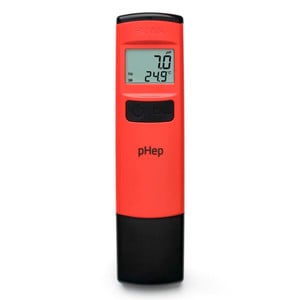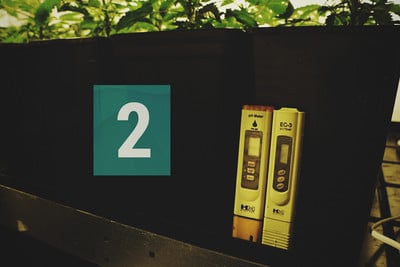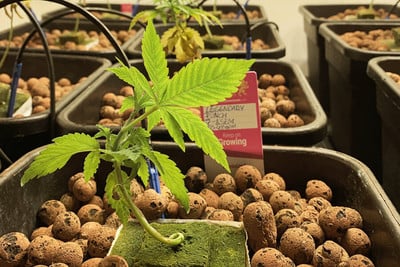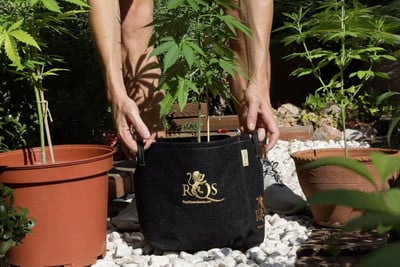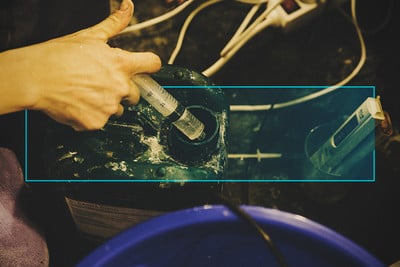Included FREE items

Watering Your Cannabis: How To Fix Over And Underwatering
- Growing cannabis step by step
- Cannabis growing basics
- Choosing your seeds
- How to germinate seeds
- The cannabis vegetative stage
- The cannabis flowering stage
- Harvesting cannabis
- Trimming, drying, and curing
- Choosing pots and soil
-
Growing indoors
- A Complete Overview Of Growing Cannabis Indoors
- Cannabis Cultivation Tips: How To Set Up Indoor Grow Lights
- How Many Cannabis Plants Can You Grow Per Square Metre?
- Indoor Cannabis Growing: Relative Humidity and Temperatures
- Hydroponics Cannabis Growing Guide (with diagrams)
- Cannabis Micro Growing: Growing Great Weed in Tiny Spaces
- Growing outdoors
- How to grow autoflowering cannabis
- Cannabis nutrients and pH
- Cannabis troubleshooting: Nutrients
-
Cannabis troubleshooting: Growing
- Cannabis Seed Germination — Troubleshooting Guide
- How to Deal With Pythium (Root Rot) in Cannabis Plants
- Slow Cannabis Plant Growth And What You Can Do About It
- How to Prevent and Fix Stretching in Cannabis Seedlings
- Watering Your Cannabis: How To Fix Over And Underwatering
- Understanding Male, Female, And Hermaphrodite Cannabis
- Identifying and Treating Common Cannabis Ailments
- How To Revive a Sick Cannabis Plant
- How to Avoid Mouldy Weed During Drying and Curing
- How to Prevent and Treat Dry and Crispy Cannabis Leaves
- What Cannabis Leaves Can Tell You
- Yellow Cannabis Leaves
-
Cannabis Strains Grow Report
- HulkBerry Automatic Grow Report
- Blue Cheese Auto Grow Report
- Purple Punch Automatic Grow Report
- Triple G Automatic Grow Report
- Do-Si-Dos Automatic Grow Report
- Green Gelato Automatic Grow Report
- Haze Berry Automatic Grow Report
- Purple Queen Automatic Grow Report
- Cookies Gelato Automatic Grow Report
- Sherbet Queen Automatic Grow Report
- Sweet Skunk Automatic Grow Report
- Medusa F1 Grow Report
- Cannabis plant training
-
Weed growing tips
- The Cannabis Plant Anatomy
- How to preserve seeds
- How Much Sunlight Do Outdoor Cannabis Plants Need To Grow?
- How to Control and Prevent Stretching in Cannabis Plants
- How And When To Transplant Your Cannabis Plants
- My Cannabis Plants Are Growing Too Tall: What Should I Do?
- Should You Worry About Purple Or Red Cannabis Stems?
- What To Do When Your Indoor Cannabis Won’t Flower
- How To Protect Your Cannabis Plants From Heat Stress
- How To Tell If Your Female Cannabis Plant Has Been Pollinated
- Growing Medical Marijuana
- Bud Washing: How to Clean Your Weed
Contents:
There are many contributing factors involved when it comes to a successful and bountiful cannabis grow. Lighting, nutrients, airflow, and humidity all play important roles in optimal growth and vibrancy of a crop. Water, however, is one of the most important aspects of keeping cannabis plants healthy and strong.
Watering isn’t always as simple as it may seem. Many growers are under the impression that completely saturating their crop with water each day is all it takes to help plants obtain their aquatic requirements.
The truth is, there is much more to the watering process. Watering cannabis plants is a balancing act that takes some time and experimentation to perfect. Too much water can lead to some serious problems for plants and may obstruct oxygen intake. On the other end of the spectrum, too little water can lead to extremely dry conditions that will leave cannabis plants thirsty, eventually causing them to wilt.
We take a look how to recognise if you are over or under watering, and how to fix it.

Overwatering your plants
Overwatering is an easy mistake to make when growing cannabis, and is most likely caused by worrying that plants need constant doses of water. It is a pitfall novice often autumn into.
Cannabis plants actually use their root systems to breath air, in addition to uptaking water, and if their roots are constantly swamped in water, they will begin to drown.
1. One primary symptom of overwatering is drooping leaves. However, it is not the same kind of droop you see when underwatered - where leaves look wilted. It is the opposite in fact. Leaves are so full of water, that they are being forced to curl in on themselves. It results in them becoming very firm.
2. Additionally, the rate of growth of overwatered plants will slow down dramatically or may even come to almost a complete halt. This is due to the anaerobic conditions that arise due to the lack of oxygen accessible to the root system.
3. Another symptom of overwatering a cannabis plant is yellowing of the leaves. This is a sign of a nutrient problem, that is a side-effect of overwatering.
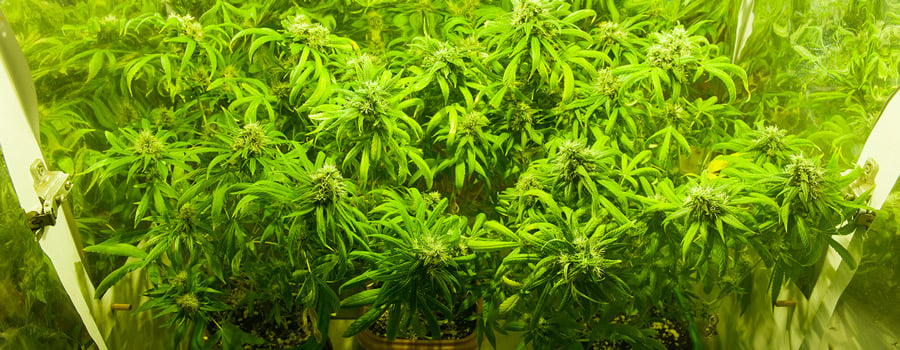
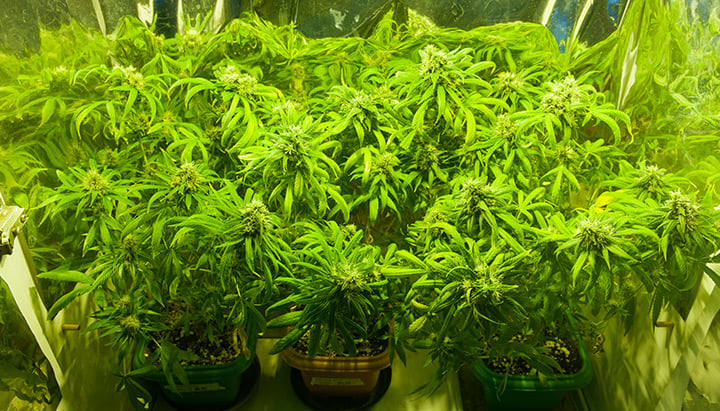
If you are experiencing any of these symptoms within your plants and believe the root cause is overwatering, the best thing to do is water less often. Wait for the top layer of soil to look and feel dry before watering again. A good test is to put your index finger in the soil up to the knuckle. if it is dry, consider watering.
Also, make sure each plant has adequate drainage and that water isn’t building up too much in the bottom of the pots or containers that they are housed within. You want excess water to drain out of the containers, leaving soil moist but not waterlogged.
Underwatering your plants
1. Underwatered cannabis plants will look very weak, lifeless, and will show signs of wilting. Its no wonder they begin to look this way considering the vital role of water in plant physiology. The wilting of underwatered cannabis is different from the plump curling of overwatering - even if only subtly. Leaves will be fragile, brittle and even papery. They will look lifeless and drab. Another sign of an under watered cannabis plant an extremely dry growing medium, such as crispy soil.
2. Underwatering occurs when growers simply aren’t meeting their plant's demands. Without adequate water, the root system will dry up and growth and yield may be reduced. Be sure to water your plant when the top inch of soil has dried out. Leaving it any longer than this may start to have detrimental effects.
3. One aspect that may cause underwatering is not using the correct pot size at certain stages of growth. For example, growing a small seedling in a large pot may reduce the plant's chances of uptaking enough water, as the small root system doesn’t have a chance to uptake water before it drains away.
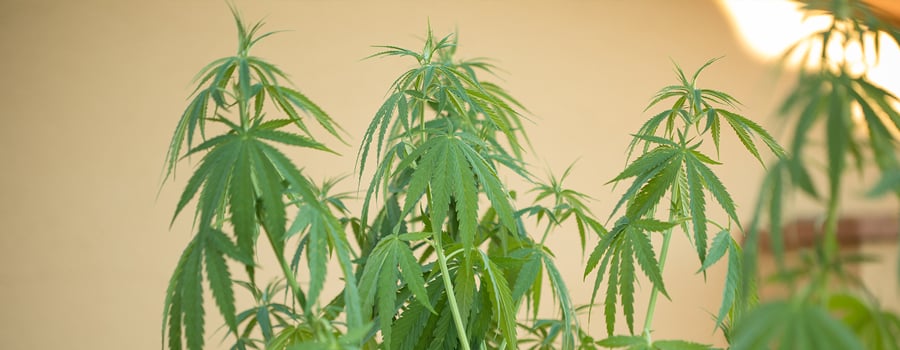
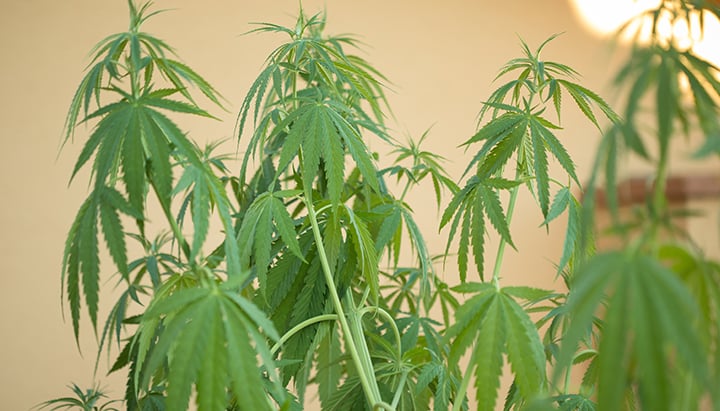
How often do you need to water your plants?
This question actually has many different answers, as many different variables are at play. For this reason, there is no exact answer. For example, temperature, humidity, and other environmental factors can all change how often water will be required.
However, there are telltale signs that will display it's time to once again water your plants. Checking the top inch of soil is a promising way to identify this.Wait for this section of the soil to be dry before watering again in order to avoid overwatering. Once you have done so multiple times, you should start to figure out how long it takes in between each watering, and then you can go by that length of time instead.
Paying close attention to your plants leaves is another way to tell if its time to water. Of course, waiting long enough to symptoms to arrive is not optimal, but any signs of wilting should immediately be followed by a dose of water.
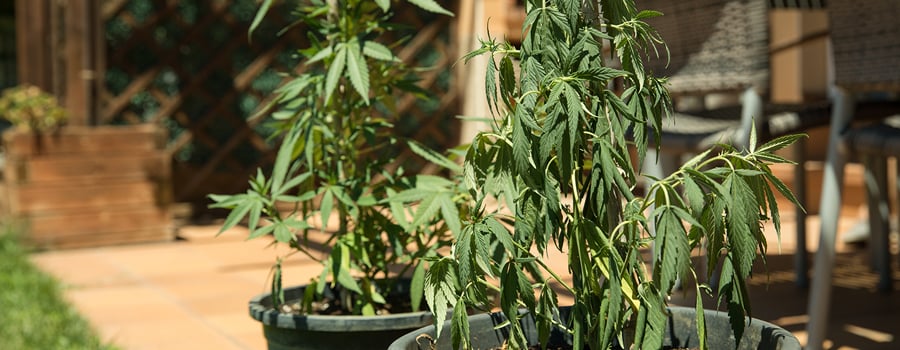
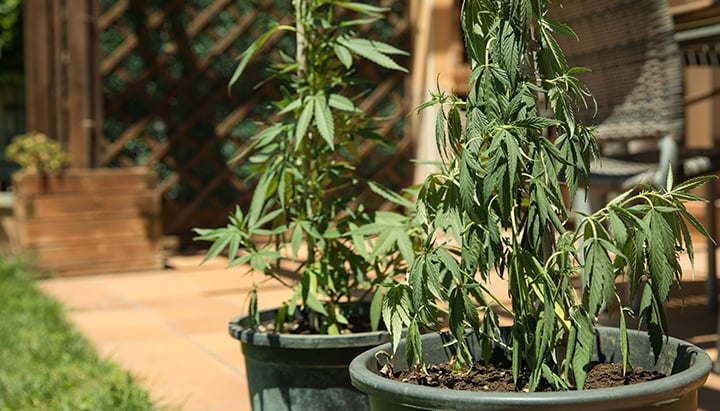
Water quality is paramount
As well as watering frequency, the quality of the water used to supply a cannabis crop is also a highly important consideration.
Cannabis plants consist of approximately 90% water, and the substance is required during various vital physiological process such as photosynthesis and transpiration. When using a poor quality water source to supply cannabis plants, these processes may be less efficient than they can be, or in worst case scenarios, disruptive.
When these disruptions occur, symptoms may manifest that appear almost identical to an array of other conditions such as over or under fertilisation, under-watering, and possibly even heat stress. This is a perfect example of why to always double and triple check the root cause of the problem when troubleshooting health issue of cannabis plants.
1. Monitor pH
Before the growing process, check the quality of your water source. One important factor when it comes to water quality is pH. pH is a numeric scale used to measure the acidity or alkalinity of a solution, with the middle value of 7 representing neutral. Numbers less than 7 represent acidity and numbers above 7 display alkalinity.
PH that is either too high or too low can cause problems in cannabis plants, as the pH of the water source can dictate a plant's ability to absorb nutrients. Too low or too high pH water can affect the pH of your grow medium over time, which results in symptoms that look identical to those caused by certain nutritional problems.
Cannabis plants tend to thrive at a pH of around 6.5. pH can be measured extremely easily by simply applying a pH metre around a water runoff sample. Runoff is water that drains from your grow container, having passed through your grow medium. If the pH is either too high or too low, pH up and down products can be used to return it to normal levels.
2. PPM
PPM is another important factor when it comes to water quality. Ppm, or parts per million, is a method of measuring the amount of minerals that have dissolved into the water source being used. So, a reading of 90ppm will indicate that there are 90 milligrams per litre of minerals present within the water source.
Being aware of the PPM within water allows growers to avoid giving their plants too many or too little minerals. A lack of minerals may lead to deficiencies, whereas too many may cause burning to occur. Cannabis plants prefer a ppm of around 500 when in the vegetative phase, and favour a ppm of around 1000 during the flowering stage of the grow cycle.
TDS meters, devices that measure total dissolved solids, can be used to measure the ppm of a water source.
Monitoring ppm is quite advanced, and while useful, is not essential for novices finding their feet. Just bear it in mind as you look to expand your knowledge and skill.
3. Reverse osmosis water
Although the total dissolved solids within your water profile might be adequate, not all substances within a water source are beneficial for your cannabis crop. Water might be contaminated with other factors such as pollutants and bacteria. Reverse osmosis filters are a great option to almost completely remove everything within a water source, allowing growers to add back only what they want their plants to come into contact with.
Reverse osmosis filters are capable of removing between 95-99% of dissolved salts within a water sample and is therefore a standard method of cleaning water on an industrial scale.
Once again, using reverse osmosis water is an advanced growing technique.
4. Testing your water runoff
To produce healthy plants, you need to keep a close eye on the amount of nutrients your plants are receiving. To do this, use trays to catch the runoff when you water your plants, and analise both its pH and PPM (parts per million).
What pH should your runoff be?
Cannabis plants tend to thrive at a pH of around 6.5. To check your pH, simply test the runoff using a pH meter. Our pH tester by Hanna Instruments is super simple to use and offers fast and accurate readings. If your pH is either too high or too low, you can use pH regulators to bring it up or down.
With the above in mind, you should be well on your way to understanding how over and underwatering affects your plants - as well as overall water quality in general.


























